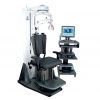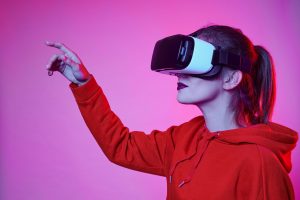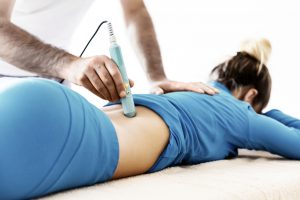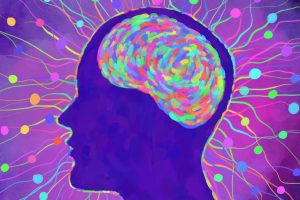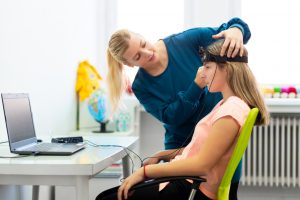
Treating Chronic Pain With Biofeedback
Treatment GuidelinesBiofeedback has long been considered an alternative treatment approach. But recently, traditional healthcare providers have used it in response to growing evidence.
Biofeedback is behavior modification that trains the brain to make the body function better. Biofeedback uses equipment to monitor and show the body’s processes in realtime1. People can use this information to regulate their physiological responses, such as:
- muscle tension
- breathing rate
- metabolism
- pulse
- blood pressure
- sweating
- brain activity
There is still much to learn about biofeedback. But research shows that this modality primarily works to relax the body. This makes it especially beneficial in the treatment of anxiety, depression, and chronic pain syndromes. Chronic pain develops when pain receptors become overly sensitive. Therefore, someone can learn to control the pain response with biofeedback and stress management. Let’s take a look at some of the conditions you can treat with biofeedback techniques.
Biofeedback for Fibromyalgia
Research supports the effectiveness of biofeedback in treating fibromyalgia2. One large study showed consistent symptom management resulting from electromyography (EMG) biofeedback. Additional research shows that biofeedback is most effective when combined with exercise3. This supports our current clinical practice of recommending supplemental exercise for our clients.
Heart rate variability (HRV) biofeedback is less direct, but equally effective for individuals with fibromyalgia. Multiple studies show that improved pulse regulation from biofeedback led to better physical stress responses4. This also led to better adjustment to pain.
Biofeedback for Lupus
Older research shows lupus patients had better results from biofeedback and CBT than traditional treatment5. Another older study focused on biofeedback for patients with lupus and Raynaud’s disease. Results showed over 50% of patients reported fewer symptoms. Another 44% saw improvements in digital ulcers one year after treatment6.
Biofeedback for Chronic Pain
Most of the evidence supporting chronic pain biofeedback surrounds lower back pain. This is not surprising, since many Americans suffer from spinal pain. When biofeedback assisted with one-time abdominal training, patients experienced less back pain7. Another similar study lowered back pain by activating the lumbar multifidus muscle8.
Similarly, many Americans are sedentary and have poor posture. This places them at risk for stress and overuse injuries from improper positioning. This is another area where biofeedback can be helpful. Biofeedback sensors have produced good results in preventing poor posture and decreasing neck pain. This same study also showed improved muscle activity after long periods of sitting. Other evidence supports biofeedback for pain relief and motor retraining secondary to stroke9.
There are also positive results from biofeedback when used by patients suffering from:
- Idiopathic wrist and forearm pain10
- Chronic postoperative knee pain11
- Persistent medial knee displacement12
- Orofacial pain disorders such as temporomandibular joint dysfunction (TMJ)13
Biofeedback & CRPS
Complex regional pain syndrome (CRPS) is known as one of the hardest chronic pain disorders to treat. But research has proven that patients with CRPS respond well to some biofeedback. The intent of biofeedback for this condition, however, should not be pain relief. Professionals should instead address the emotions that surround movement. These may include fear, anxiety, and avoidance.
One study showed that when biofeedback focused on fear, patients experienced greater motor control14. They also made improvements in bilateral desensitization. However, attempts at unilateral desensitization were minimally effective15. Mirror therapy for CRPS utilizes a sensory-based approach. This happens through visual feedback to minimize sensitivity, anxiety, and fear-based responses.
Implications for Practice
As you can see, there is growing evidence on biofeedback for rehabilitation. There are many options for clinical professionals to pursue certification. Licensed healthcare professionals can begin using biofeedback immediately. They must practice under a biofeedback-certified provider. Clinical professionals (those with or without biofeedback experience) can also obtain their own board certification.
The Biofeedback Certification International Alliance offers specialties for people who treat specific populations. Clinical professionals can seek certification in:
- Neurofeedback: using electroencephalogram/EEG to monitor brain activity
- Pelvic muscle dysfunction: the use of electromyography/EMG to monitor muscle tension and stiffness
- Heart rate variability: electrocardiogram (ECG or EKG) to track the pulse
There are four certification pathways:
- CPE (certification by prior experience), which involves documentation of 3,000 hours treating patients using the biofeedback subtype in question and taking a certification exam
- Entry-level, which involves taking 42 hours of training, shadowing a clinical professional who is board-certified in the biofeedback subtype, and taking a certification exam
- Technician CPE, which is suitable for clinical professionals who do not have the higher level of training that entry-level providers do; this certification entails documentation of 3,000 hours treating patients using the biofeedback subtype in question, taking 36 hours of training, and taking a certification exam
- Entry-level technician, which is only available to clinical professionals who work directly under a provider who is board-certified in the biofeedback subtype
Biofeedback is an evidence-based treatment method that can help those with chronic pain. Those who want to treat patients using biofeedback should seek appropriate certification for their level of experience.
Brittany Ferri, PhD, OTR/L, CPRP is an Occupational Therapist and owner of Simplicity of Health where she provides health writing, consulting, and program development services. She is passionate about client-centered care and the intersection of technology and health. To learn more, visit www.simplicityofhealth.com
References:
- Malik, K., & Dua, A. (2021). Biofeedback. In StatPearls. StatPearls Publishing.
- Lauche, R., Cramer, H., Häuser, W., Dobos, G., & Langhorst, J. (2015). A Systematic Overview of Reviews for Complementary and Alternative Therapies in the Treatment of Fibromyalgia Syndrome. Evidence-based complementary and alternative medicine : eCAM, 2015, 610615. https://doi.org/10.1155/2015/610615
- Bidonde, J., Busch, A. J., Schachter, C. L., Webber, S. C., Musselman, K. E., Overend, T. J., Góes, S. M., Dal Bello-Haas, V., & Boden, C. (2019). Mixed exercise training for adults with fibromyalgia. The Cochrane database of systematic reviews, 5(5), CD013340. https://doi.org/10.1002/14651858.CD013340
- Reneau M. (2020). Heart Rate Variability Biofeedback to Treat Fibromyalgia: An Integrative Literature Review. Pain management nursing : official journal of the American Society of Pain Management Nurses, 21(3), 225–232. https://doi.org/10.1016/j.pmn.2019.08.001
- Greco, C. M., Rudy, T. E., & Manzi, S. (2004). Effects of a stress-reduction program on psychological function, pain, and physical function of systemic lupus erythematosus patients: a randomized controlled trial. Arthritis and rheumatism, 51(4), 625–634. https://doi.org/10.1002/art.20533
- Yocum, D. E., Hodes, R., Sundstrom, W. R., & Cleeland, C. S. (1985). Use of biofeedback training in treatment of Raynaud’s disease and phenomenon. The Journal of rheumatology, 12(1), 90–93.
- Xu, C., Fu, Z., & Wang, X. (2021). Effect of Transversus abdominis muscle training on pressure-pain threshold in patients with chronic low Back pain. BMC sports science, medicine & rehabilitation, 13(1), 35. https://doi.org/10.1186/s13102-021-00262-8
- Sarafadeen, R., Ganiyu, S. O., & Ibrahim, A. A. (2020). Effects of spinal stabilization exercise with real-time ultrasound imaging biofeedback in individuals with chronic nonspecific low back pain: a pilot study. Journal of exercise rehabilitation, 16(3), 293–299. https://doi.org/10.12965/jer.2040380.190
- Zaborova, V., Fesyun, A., Gurevich, K., Oranskaya, A., Rylsky, A., Kryuchkova, K., Malakhovskiy, V., & Shestakov, D. (2021). Changes in kinesiostabilogram parameters and movement speed of stroke patients while increasing their physical activity due to the use of biofeedback method. European journal of translational myology, 10.4081/ejtm.2021.9360.
- Folchert, M., Breuner, C., & Steinman, S. (2021). Impact of Biofeedback in the Treatment of Nonspecific Persistent Wrist and Forearm Pain in Adolescents. The Journal of hand surgery, 46(2), 152.e1–152.e6. https://doi.org/10.1016/j.jhsa.2020.09.005
- Karaborklu Argut, S., Celik, D., & Yasacı, Z. (2021). Effectiveness of therapeutic electromyographic biofeedback after orthopedic knee surgeries: a systematic review. Disability and rehabilitation, 1–9. Advance online publication. https://doi.org/10.1080/09638288.2020.1867904
- Marshall, A. N., Hertel, J., Hart, J. M., Russell, S., & Saliba, S. A. (2020). Visual Biofeedback and Changes in Lower Extremity Kinematics in Individuals With Medial Knee Displacement. Journal of athletic training, 55(3), 255–264. https://doi.org/10.4085/1062-6050-383-18
- Swedish Council on Health Technology Assessment. (2006). Methods of Treating Chronic Pain: A Systematic Review. Swedish Council on Health Technology Assessment (SBU).
- Osumi, M., Sumitani, M., Otake, Y., & Morioka, S. (2018). Fear of movement modulates the feedforward motor control of the affected limb in complex regional pain syndrome (CRPS): A single-case study. Medical hypotheses, 110, 114–119. https://doi.org/10.1016/j.mehy.2017.12.002
- Conen, H., Seelmann, C., Ohmann, T., & Papenhoff, M. (2020). Bilaterale Desensibilisierung bei CRPS mit Allodynie der Hand : Ein innovativer Arbeitsansatz in der Ergotherapie [Bilateral desensitization in CRPS with allodynia of the hand : An innovative treatment approach in ergotherapy]. Schmerz (Berlin, Germany), 34(1), 79–83. https://doi.org/10.1007/s00482-019-00430-3

